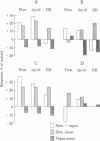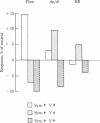Abstract
Simultaneous recording of activity in the vagal and sympathetic supplies to the heart has revealed that in reflexly and centrally evoked activity these two "antagonists" do not necessarily change action reciprocally. Coactivation occurs in chemoreceptor reflexes and related reactions, upon stretching of the sinoatrial nodal region of the right atrium and when certain hypothalamic regions are stimulated. The objective of the present work was to assay the physiological importance of coactivation of the two potentially antagonistic cardiac nerves in anesthetized dogs. Output from the heart was monitored by recording volume flow in the thoracic aorta just below the aortic arch; cardiac contractility was measured as left ventricular dp/dt. Tape recordings of vagus and sympathetic nerve activity during chemoreceptor and baroreceptor reflexes, during reciprocal and nonreciprocal changes produced by hypothalamic stimulation, and during hypoxia and hypercapnia were used to trigger stimulators feeding a stimulus per action potential to cardiac vagus and sympathetic nerves after central connections were cut. The vagus stimulation alone produced a decrease in aortic blood flow; stimulation of the sympathetic nerve alone resulted in increased aortic blood flow. Simultaneous stimulation of vagus and sympathetic, however, produced an even greater cardiac output (measured by aortic blood flow). Intermediate degrees of heart rate and strength of myocardial contraction were maintained in coactivation. Obviously, an association of increased vagus and sympathetic actions, which can be effected reflexly or by action of higher centers, is of physiological benefit. In control reactions that relate cardiac function to body need, both reciprocal and synergistic actions (coactivation) of cardiac nerves are used.
Full text
PDF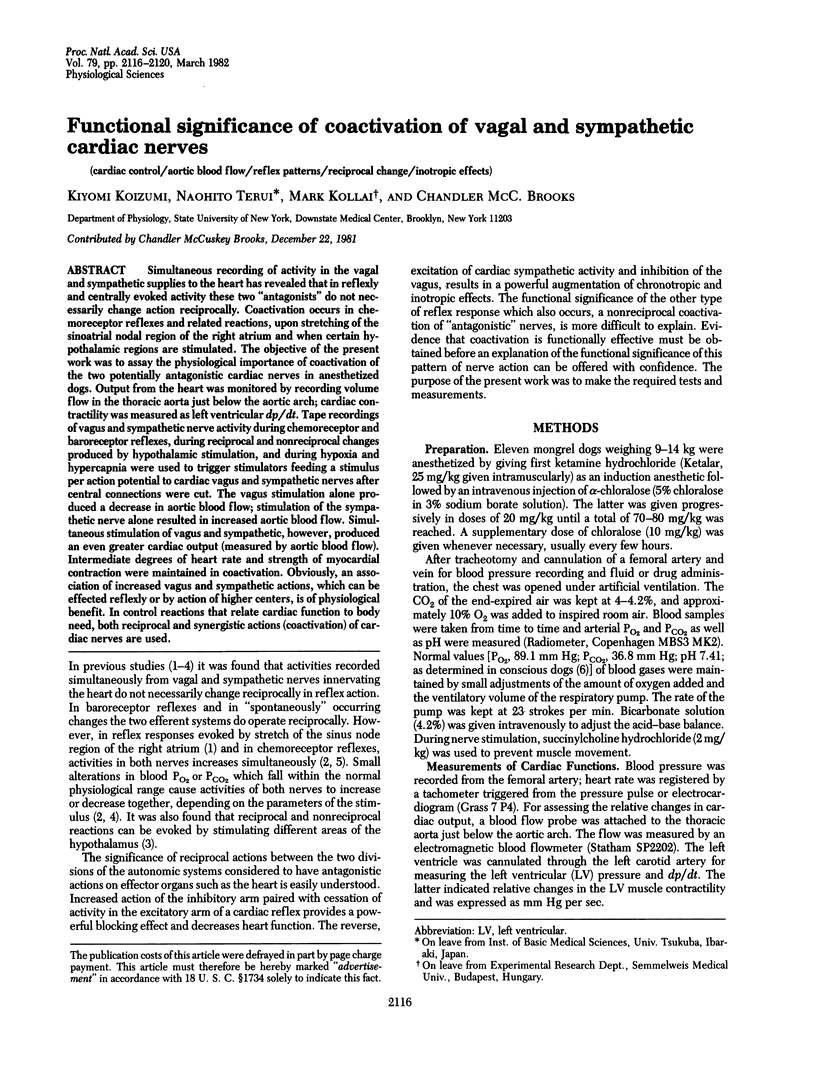
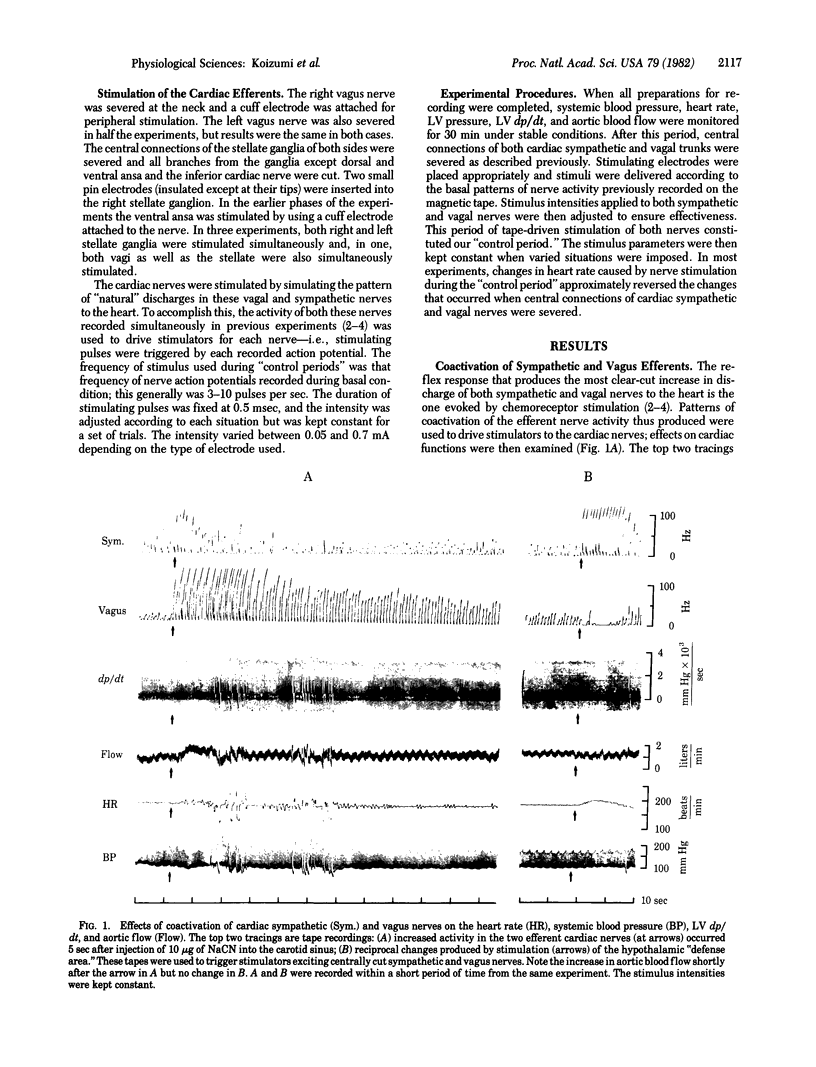
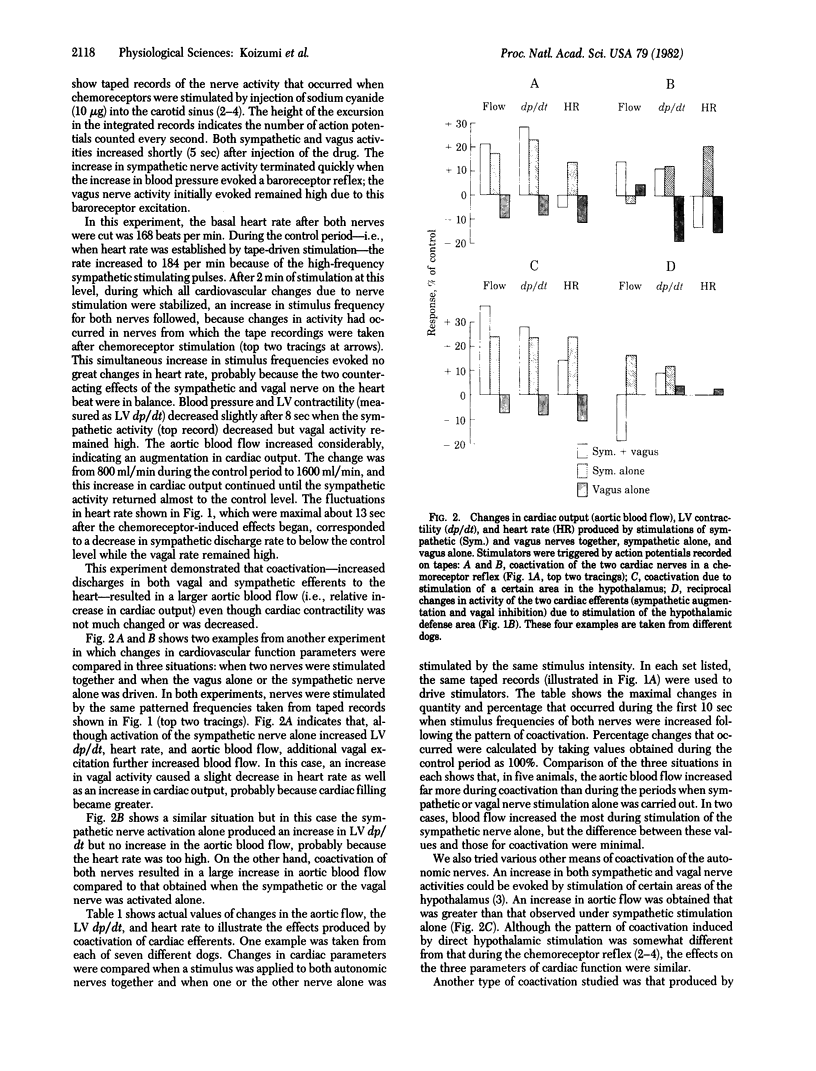
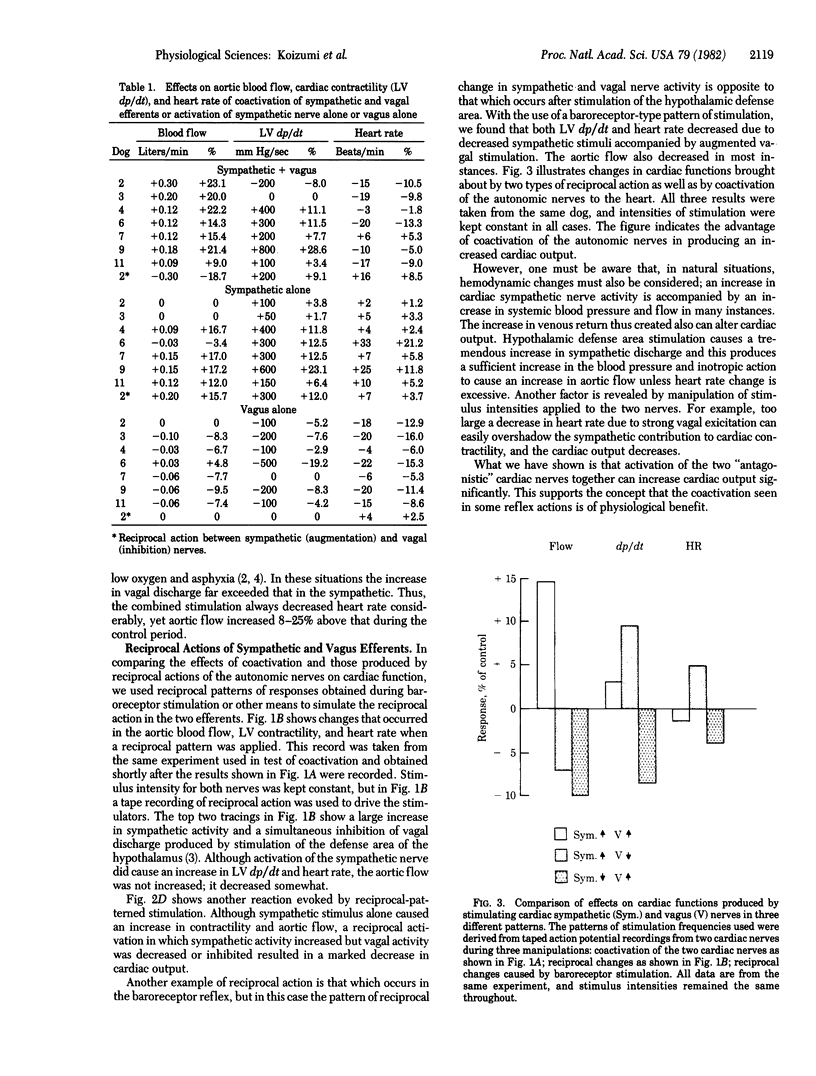
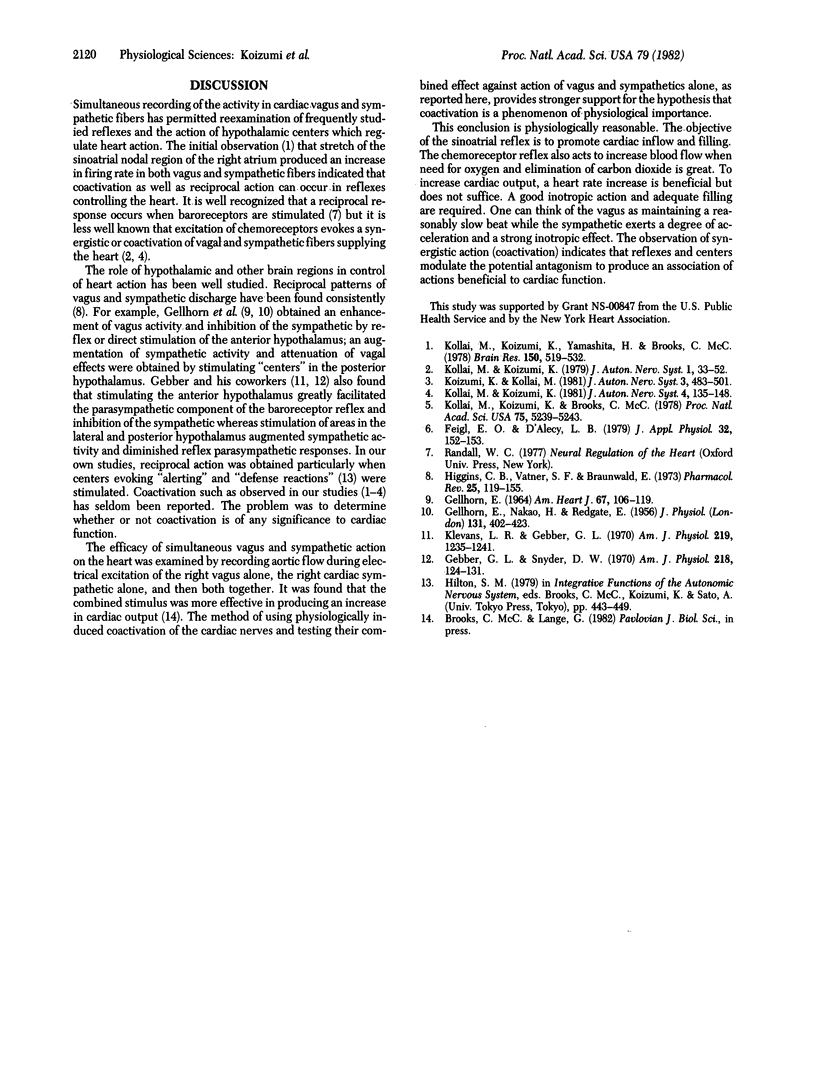
Images in this article
Selected References
These references are in PubMed. This may not be the complete list of references from this article.
- GELLHORN E., NAKAO H., REDGATE E. S. The influence of lesions in the anterior and posterior hypothalamus on tonic and phasic autonomic reactions. J Physiol. 1956 Feb 28;131(2):402–423. doi: 10.1113/jphysiol.1956.sp005471. [DOI] [PMC free article] [PubMed] [Google Scholar]
- GELLHORN E. THE SIGNIFICANCE OF THE STATE OF THE CENTRAL AUTONOMIC NERVOUS SYSTEM FOR QUANTITATIVE AND QUALITATIVE ASPECTS OF SOME CARDIOVASCULAR REACTIONS. Am Heart J. 1964 Jan;67:106–120. doi: 10.1016/0002-8703(64)90406-5. [DOI] [PubMed] [Google Scholar]
- Gebber G. L., Snyder D. W. Hypothalamic control of baroreceptor reflexes. Am J Physiol. 1970 Jan;218(1):124–131. doi: 10.1152/ajplegacy.1970.218.1.124. [DOI] [PubMed] [Google Scholar]
- Higgins C. B., Vatner S. F., Braunwald E. Parasympathetic control of the heart. Pharmacol Rev. 1973 Mar;25(1):119–155. [PubMed] [Google Scholar]
- Klevans L. R., Gebber G. L. Facilitatory forebrain influence on cardiac component of baroreceptor reflexes. Am J Physiol. 1970 Nov;219(5):1235–1241. doi: 10.1152/ajplegacy.1970.219.5.1235. [DOI] [PubMed] [Google Scholar]
- Koizumi K., Kollai M. Control of reciprocal and non-reciprocal action of vagal and sympathetic efferents: study of centrally induced reactions. J Auton Nerv Syst. 1981 Apr;3(2-4):483–501. doi: 10.1016/0165-1838(81)90082-5. [DOI] [PubMed] [Google Scholar]
- Kollai M., Koizumi K., Brooks C. M. Nature of differential sympathetic discharges in chemoreceptor reflexes. Proc Natl Acad Sci U S A. 1978 Oct;75(10):5239–5243. doi: 10.1073/pnas.75.10.5239. [DOI] [PMC free article] [PubMed] [Google Scholar]
- Kollai M., Koizumi K. Cardiovascular reflexes and interrelationships between sympathetic and parasympathetic activity. J Auton Nerv Syst. 1981 Jul;4(2):135–148. doi: 10.1016/0165-1838(81)90091-6. [DOI] [PubMed] [Google Scholar]
- Kollai M., Koizumi K. Reciprocal and non-reciprocal action of the vagal and sympathetic nerves innervating the heart. J Auton Nerv Syst. 1979 Oct;1(1):33–52. doi: 10.1016/0165-1838(79)90004-3. [DOI] [PubMed] [Google Scholar]
- Kollai M., Koizumi K., Yamashita H., Brooks C. M. Study of cardiac sympathetic and vagal efferent activity during reflex responses produced by stretch of the atria. Brain Res. 1978 Jul 21;150(3):519–532. doi: 10.1016/0006-8993(78)90817-x. [DOI] [PubMed] [Google Scholar]




